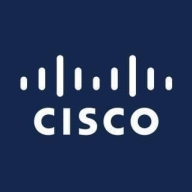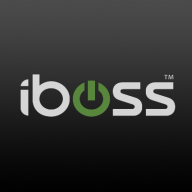


Find out what your peers are saying about Cisco, Palo Alto Networks, Infoblox and others in Domain Name System (DNS) Security.
| Product | Market Share (%) |
|---|---|
| Cisco Umbrella | 20.6% |
| Infoblox Advanced DNS Protection | 19.3% |
| Palo Alto Networks DNS Security | 11.5% |
| Other | 48.599999999999994% |
| Product | Market Share (%) |
|---|---|
| iboss | 2.1% |
| Prisma Access by Palo Alto Networks | 15.3% |
| Netskope | 12.2% |
| Other | 70.4% |
| Product | Market Share (%) |
|---|---|
| Infoblox BloxOne Threat Defense | 6.3% |
| Cisco Umbrella | 20.6% |
| Infoblox Advanced DNS Protection | 19.3% |
| Other | 53.8% |



| Company Size | Count |
|---|---|
| Small Business | 49 |
| Midsize Enterprise | 30 |
| Large Enterprise | 51 |
| Company Size | Count |
|---|---|
| Small Business | 6 |
| Midsize Enterprise | 6 |
| Large Enterprise | 5 |
| Company Size | Count |
|---|---|
| Small Business | 3 |
| Midsize Enterprise | 3 |
| Large Enterprise | 12 |
Cisco Umbrella delivers rapid DNS security with over 30,000 customers, providing outstanding threat protection and handling more than 600 billion requests daily. It's recognized for high threat efficacy in the SSE domain and integrates elements like SWG, ZTNA, CASB, and more.
Cisco Umbrella is renowned for its effective DNS-layer security against ransomware and phishing. It offers flexible content filtering and integrates seamlessly with existing networks while providing single-pane-of-glass management for centralized monitoring. Its robust threat intelligence and customizable policies are central to its appeal. Users highlight room for improvement in areas like WHOIS data inclusion, malware enhancement, and reporting analytics. Integration with other threat feeds and better client support are requested for more comprehensive coverage.
What are the key features of Cisco Umbrella?
What should users expect in reviews about Cisco Umbrella?
Industries implement Cisco Umbrella primarily for DNS-level security, web filtering, and protecting remote employees. It strengthens cybersecurity frameworks by blocking malware and avoiding access to harmful sites. The tool is widely integrated with Active Directory and Cisco Meraki, providing consistent internet security for employees.
Iboss offers a comprehensive cloud-based security platform valued for its scalability and autonomous features, ensuring robust security with easy deployment and management capabilities.
Renowned for its robust security architecture, Iboss integrates seamlessly within diverse networks, delivering efficient granular filtering and advanced content categorization. Its single pane of glass console provides ease of management, allowing rapid scalability suitable for rapidly deploying environments. Operates in BYOD setups due to inline filtering without device installation. Integration with cloud-based applications enhances user control, and features like SASE, SSL inspection, and ChatGPT risk protection stand as highlights. Despite its strengths, users have pointed out areas for enhancement like direct navigation in reports, SSL decryption, and better cloud integration while having room to improve data loss prevention.
What are the most important features of Iboss?The usage of Iboss spans educational institutions, specifically K-12, to enforce internet policies, protect data, and support remote work environments. It provides web filtering and security frameworks to ensure safe browsing. Its platform-as-a-service model offers flexibility for both cloud-based and on-premises requirements, integrating seamlessly to deliver enhanced security features suitable for various deployment needs including zero trust, CASB, and network security for work-from-home setups.
Infoblox BloxOne Threat Defense strengthens and optimizes your security posture from the foundation up, giving you the visibility, control and automation to secure the hybrid workplace. Operating at the DNS level, BloxOne Threat Defense uncovers threats that other solutions do not and stops attacks earlier in the threat lifecycle. Through pervasive automation and ecosystem integration, it drives efficiencies in SecOps, increases the effectiveness of the existing security stack, secures digital and work-from-anywhere efforts and lowers the total cost for cybersecurity.